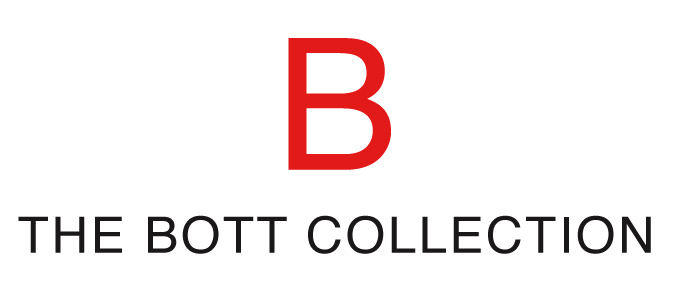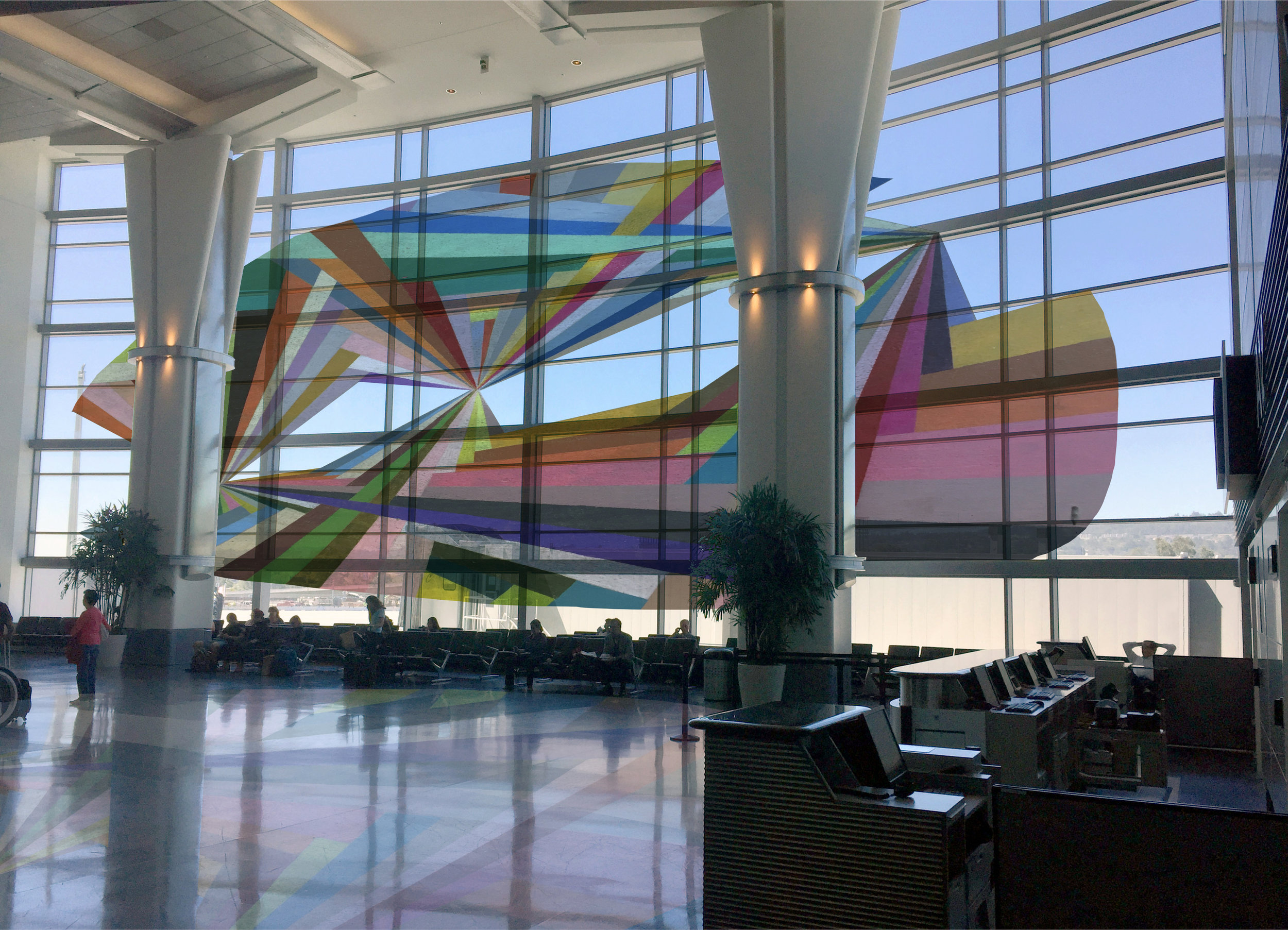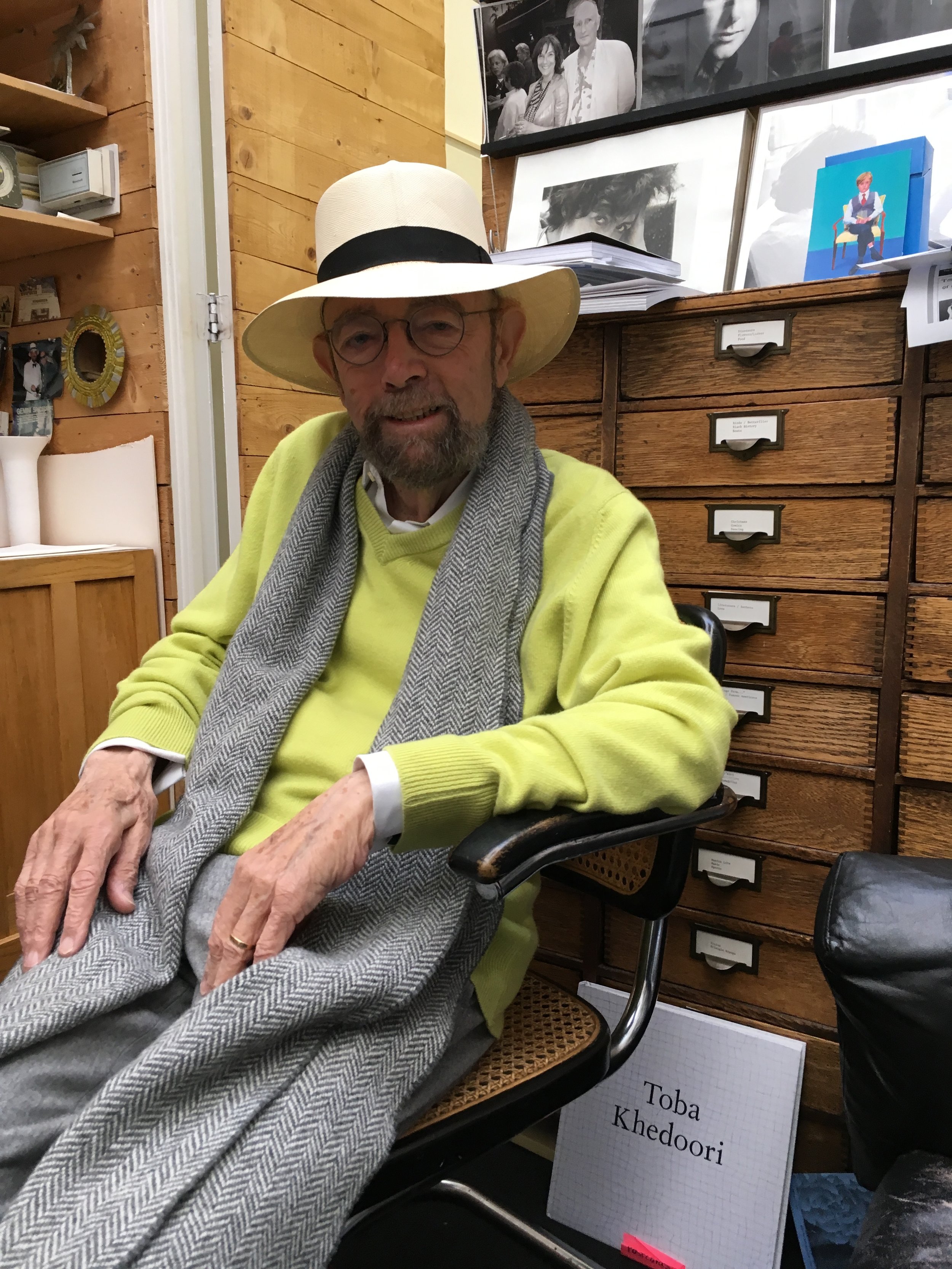The Fearless Art of Alicia McCarthy
Alicia McCarthy, identified with the San Francisco Mission School art movement, finds ways to translate her vision of interconnectedness. McCarthy reflects,
Alicia McCarthy wraps her arm around Ruby Neri at the Berkeley Art Museum, 2018
"Like hand-crafted color, we are all on unique paths but constantly interacting with others, offering new experiences where we intersect. Those interactions enrich our life experiences, offering a unique vision into the idea that as a community we are more vibrant and greater than any one individual.”
McCarthy's work really began to stand out for me in 2011 after Jack Hanley moved to New York and started showing her weave paintings in his gallery there. Her extraordinary colorful weave paintings garnered a lot of attention. Everyone at Paulson Bott Press wanted to work with her, even though we knew it was going to be challenging to make a print as stunning and rich as her paintings.
Alicia McCarth, Untitled, 2017
Gouache, spray and latex paint on wood
60 x 60 in.
Often studio visits are very informative. We get to know an artist and see first hand how they approach working in their own studios. These observations are crucial in helping us work with them in the print studio. We made an appointment to visit her in downtown Oakland. At that time, her tiny studio was located in a battered old five-story brick building on the fourth floor. She shared her space with two other artists. When we visited, she was working on several 5' x 5' paintings that took up the whole space. I don’t know how she got them in and out of there. Every surface was covered. I had never seen more colored pencils in my life. She was hand coloring a painted wood panel while we discussed her upcoming print project.
In the print studio, we continued the discussion about different printmaking methods we could use to create the feeling of a weave. For her paintings, she’ll start in the center; she’ll paint two vertical lines and then two horizontal lines. Working back and forth between vertical and horizontal, she slowly adds lines of vibrant color. She builds it like a basket, weaving out so that there is an actual physical weaving of the colors going under and over.
UNTITLED (Z.P.R.R.A.Y) (102), 2016, Color sugarlift aquatint, and aquatint with drypoint and flatbite. 40 1⁄2” x 44” . Edition of 35
To replicate that effect with a print, she made two plates, using sugar lift. She set the plates side by side and painted them with stripes, using the same brush and spacing the stripes equally: a stripe of sugar lift, a stripe of bare copper. Her working style required her to work vertically. Fortunately, we’d learned from working with Gary Simmons that we could take the copper plates and screw them directly to the wall. We couldn’t actually weave the stripes of color the way she made her paintings. So we printed the two plates at right angles to each other to create the weave effect.
Alexander Groshong and Alicia McCarthy at Paulson Bott Press, 2016
More recently, I’ve been working with her on public art. I helped her apply for the public art pool for the San Francisco Arts Commission. SFAC ended up in selecting her to make three proposals. We were thrilled when she was awarded the commission for Jet Blue at Boarding Area A in the San Francisco International Airport. She’s creating a large glass panel that will hang in front of the bay windows at the end of the walkway in the international terminal. There’s a lot of paperwork involved, and we are still trying to find a structural engineer to work with. There’s no existing structure in place to support the weight of her piece, so it’s going to be a huge challenge.
Alicia McCarthy, 2016 Rendering of SFO Terminal A glass-panel proposal
She decided not to create a weave image for the airport piece, because the mullions for the existing bay-window already creates a grid. As she put it, “It’s going to be grid-crazy if I do a weave.” So she came up with a color burst idea, rays of color radiating out of three different points that overlap and come together to form a new color. It’s going to be beautiful.
Alicia on a ladder, working on a public art installation in Indonesia
Alicia is fearless. She’s always juggling several things at once, creating installations for multiple venues as well as staying on top of her studio practice and teaching. She plays the banjo and guitar without ever having had lessons. She has no fear of climbing on scaffolding to paint a seven-story building. She’s a passionate, generous teacher at SFAI. She instructs her students to “Show up for yourself.” It is apparent she is speaking about herself and her art.









